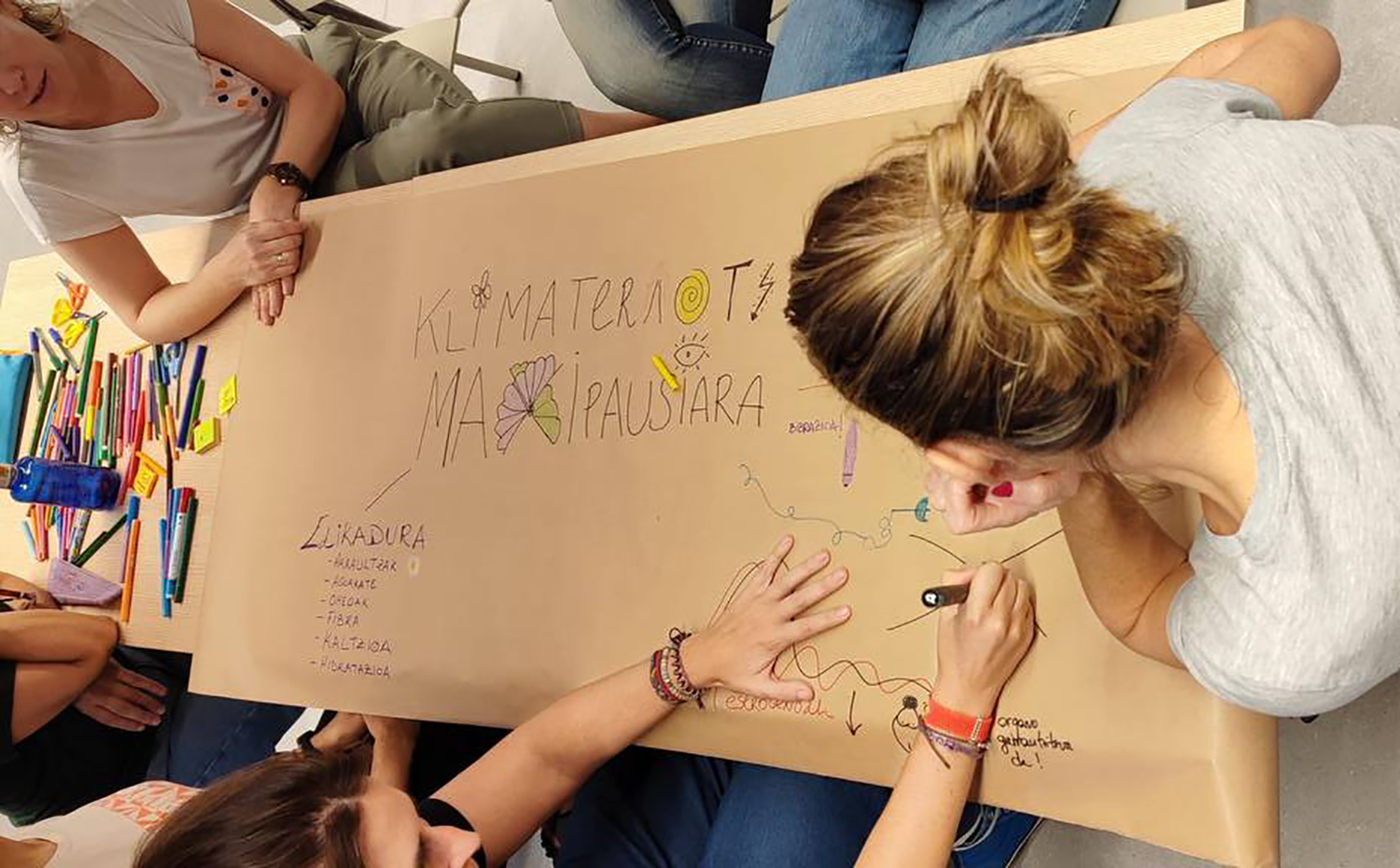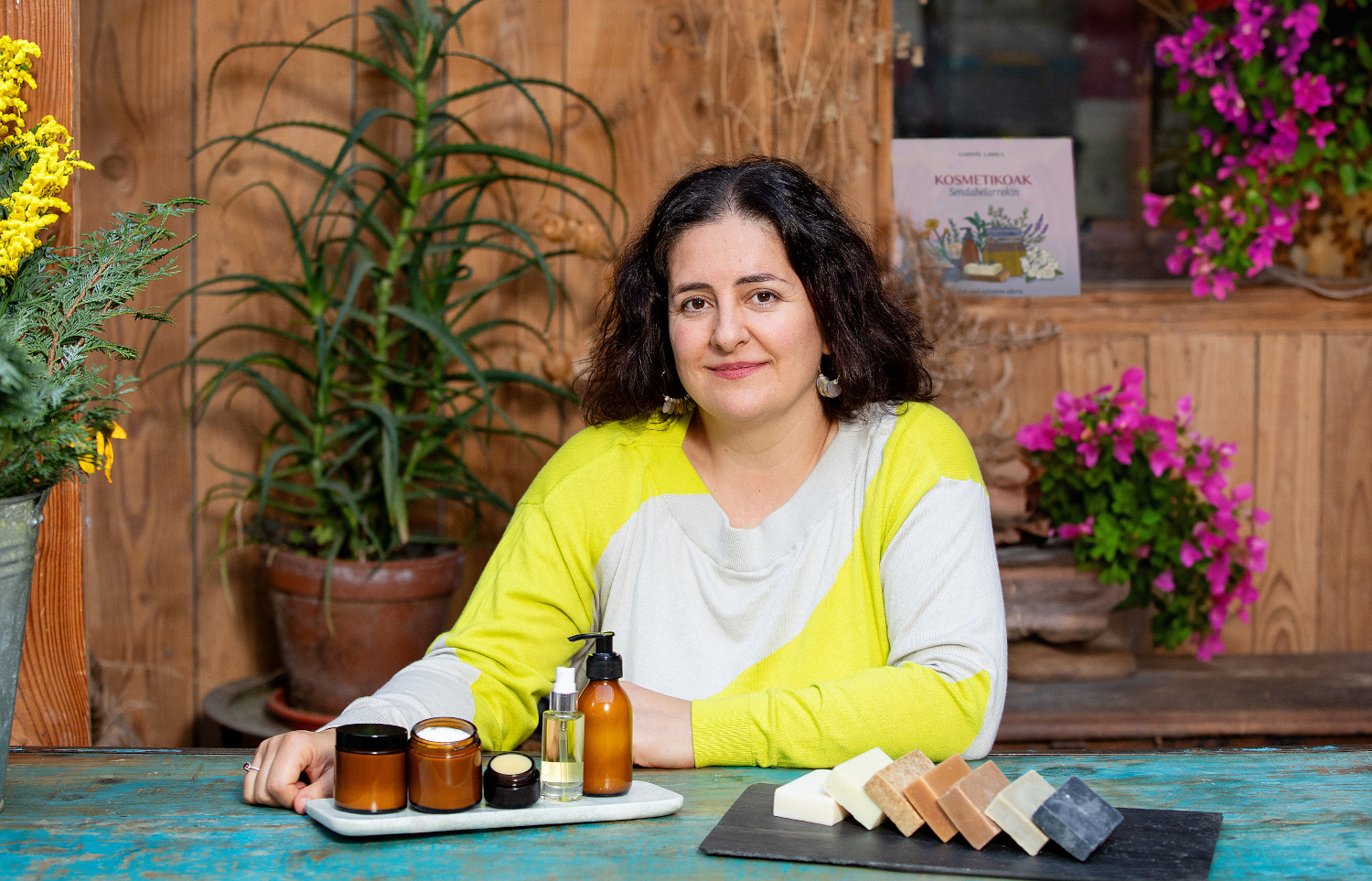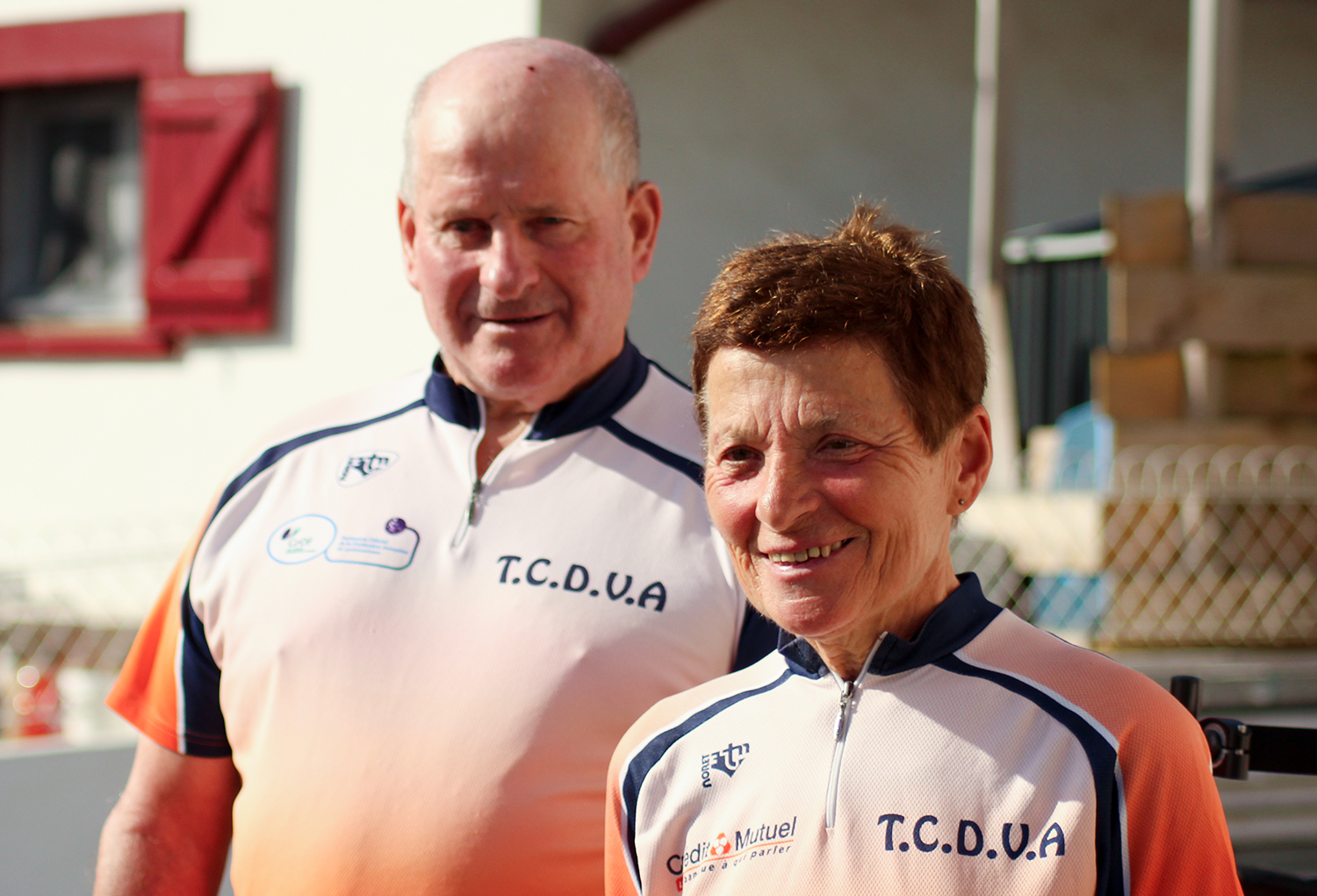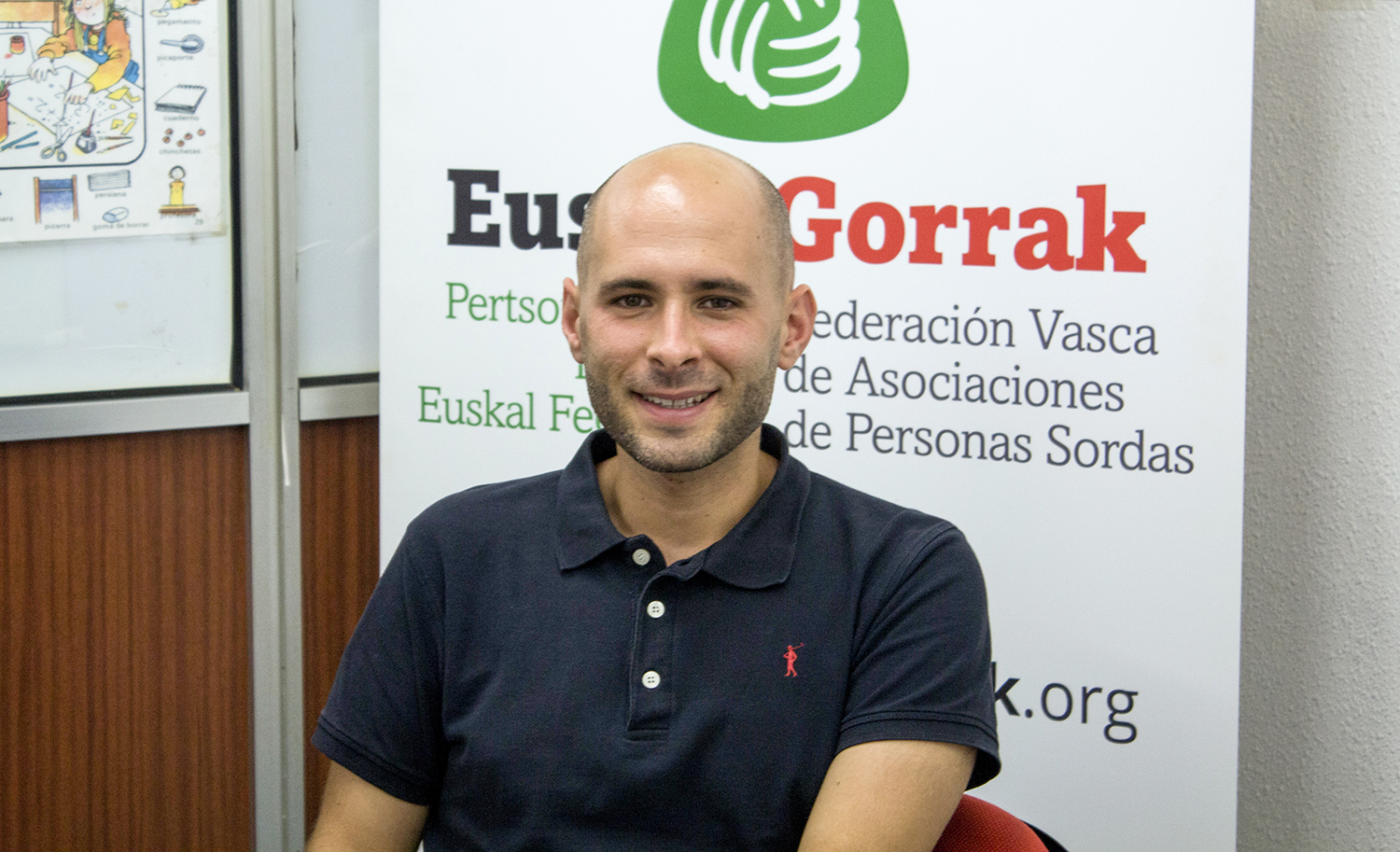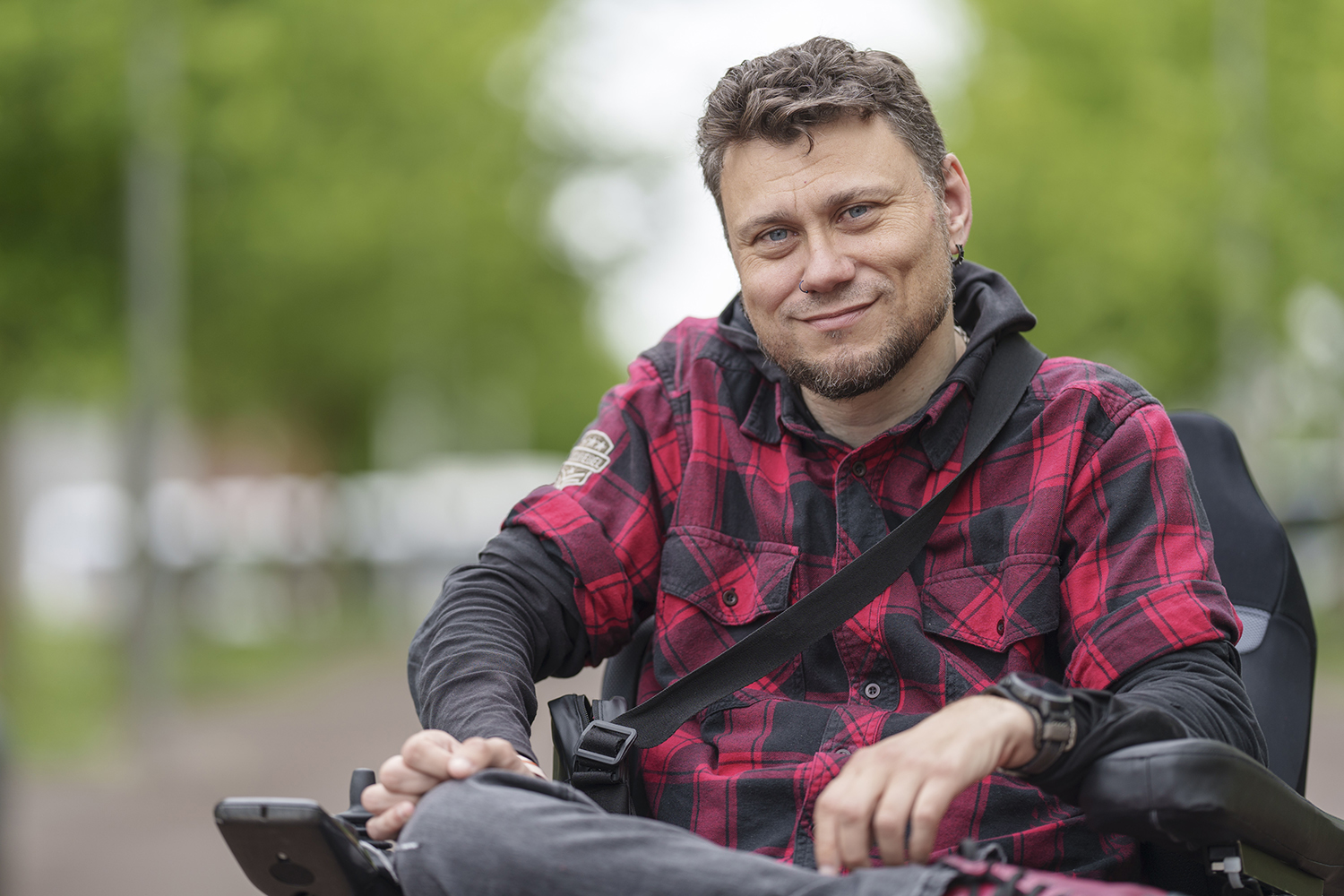Battlefield of patriarchy
- Diseases of women* are urinary loss and vaginal dryness, normalized diseases. Perineal or pelvic floor problems are often due to obstetric violence and sexual repression. Patients report the abandonment of the androcentric health system, as well as physiotherapists and feminist psychologists.
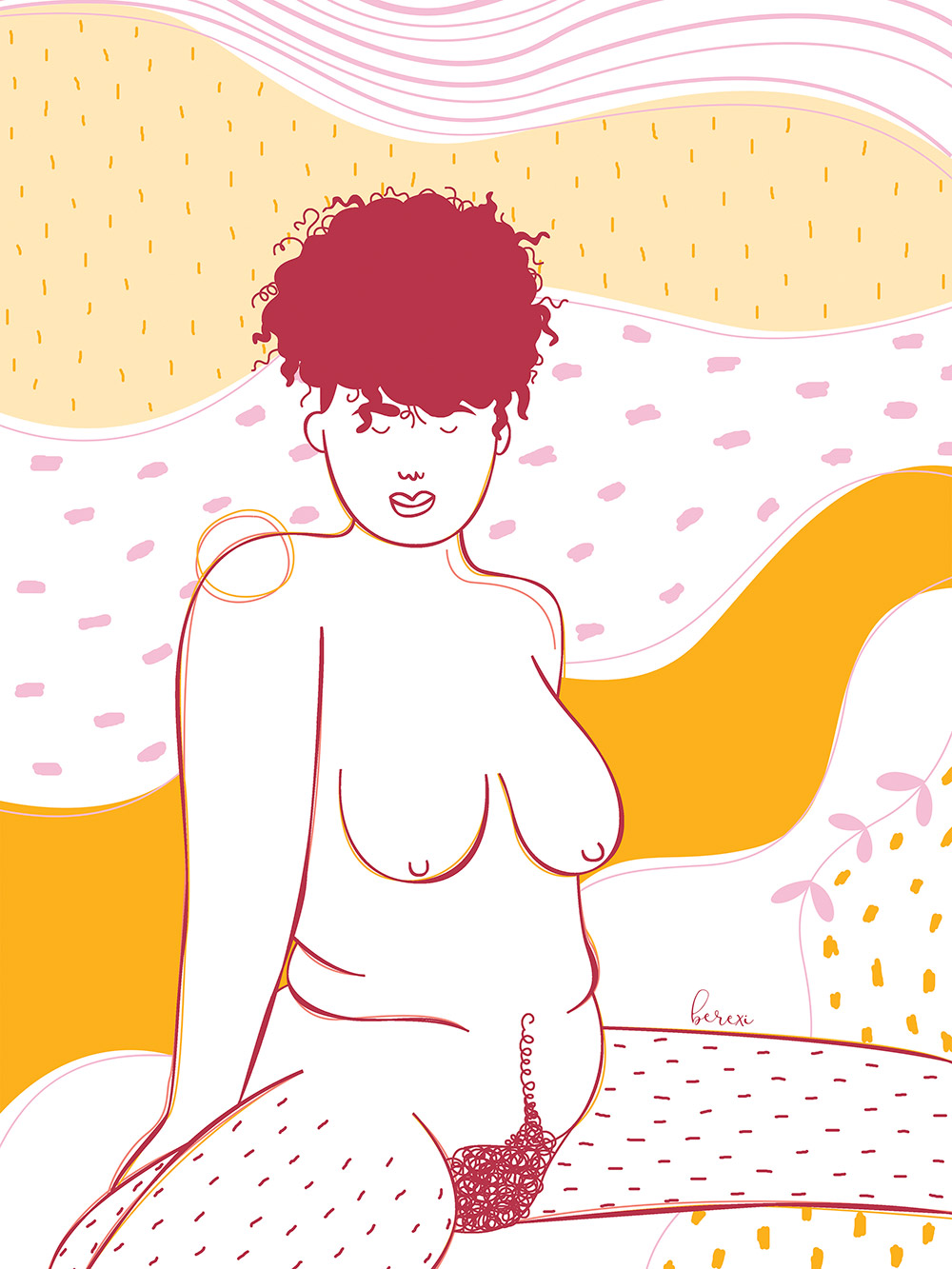
Advertisements selling lubricant and incontinence pads to women are common on TV. “You can be yourself” is the motto of the well-known compress brand. If we click on the website menu of this company in the section “Causes of Women’s Incontinence” we will see: Neurological damage – Medical problems – Menopause – Pregnancy – Urinary tract infection. One missing: Patriarchy.
“These ads use the same message that we’ve been sold with the rule: being calm, it’s normal, putting a compress and no one notices it,” explains Juncal Alzugaray, a pelvic floor specialist physiotherapist and sexology. Her interest in gestational and postpartum physiotherapy woke her up in the career, but she found very little information, mostly in English or French, scientific and written in a very cold tone. Inspired by Erika Irusta’s menstrual pedagogy, she has enthusiastically embarked on pelvic floor outreach through workshops and social networks. He has also written, illustrated and self-edited a pamphlet, My pelvic floor.
Carpet to be kept
The first chapter of the book provides anatomical information on the pelvic floor: “It is a fibrous muscle structure that covers the pelvic floor, also known as perineum. It goes from the pubis to the coxs, and to the sides to the ischions, to the little bones we notice in the ass when we sit.” Hammock muscles holding the viscera in collaboration with a transverse with cortex function.
Since we've become bipedal animals, the first pelvic wall is the soil, and gravity has increased the pressure. Consequently, maintaining the tone for the human being is of vital importance. Throughout life, the pelvic floor of women can be damaged* by postural impropriety, for example, the inclination increases the pressure, the influence of pregnancy, childbirth and puerperium, as well as menopause; the practice of sports impact or the use of wind instruments; chronic cough or constipation; obesity, diabetes, etc.

The most serious problems that can occur are prolapses, such as the anal exit of a part of the large intestine or a part of the uterus from the vagina. On the contrary, the most common is incontinence: the perineum muscles take the form of a ring to embrace the urethra and the anus, and if these sphincters weaken, we will have difficulty holding urine or cacao. Some people have urine loss when they make some effort – sneezing, laughing, skipping, lifting the load – others have emergency incontinence – the sphincter will not detect in time that the bladder is full and the pressure is excessive when trying to close the passage to the urine – and a combination of both can occur.
The vagina also has its ring, with a special protagonist role in both sexual and parturient relations. The movement of this musculature activates lubrication. Lola is 45 years old and as a result of the climacteric, a period of premenopausal and postmenopausal transition, she has contracture in the pelvic floor and her vagina dries. As a result, lately she has urinary and vaginal infections and has painful alua. In the consultation of Alzugaray he has found the attention that Osakidetza has not given him: treatment with massages, ultrasound and plants (yellow hawthorn), but above all empathy and tenderness.
The two gynecologists told him that he had internal genitals well and the only solution they offered him was the prescription of intercourse eggs. “But I don’t talk about intercourse! As I walk, I also feel discomfort in the vulva and I have not been looked at nor the vulva.” Once so unbearable was pain, he went to the emergency room. The young gynecologist who attended her understood her disease and confirmed the need for her vulva and physiotherapy.
Lola is a psychologist and sexologist, a training that allows her to know her body and access information and resources. He is aware that “many people are not so lucky” and regrets that the message of the health system is: “From a certain age onwards, women have to get used to living with a certain symptomatology, even if it is painful.”
For Alzugaray the problem is that Western medicine is androcentric: “For example, the word climacteric is not used, only menopause. Most doctors value organs, but do not value our feelings and consider our discomfort to be inventions or psychosomatizations. This increases suffering, and from there to the antidepressants there is only one step. Everything is related, it is structural violence.”
Abandonment is violence
You've stopped. Everything is new, as well as sensations between the legs or the appearance of the fin. The midwife will look at the points and, at best, recommend Kegel or hypopressive exercises. The gynecologist through the ultrasound will only study the internal organs. Osakidetza does not offer a physiotherapeutic evaluation and whoever wants it (whoever can) should go to a private consultation. “That’s the struggle: midwives and gynecologists should receive sex education and take care of the pelvic floor. In addition, there should be a specialized physiotherapist in each region,” Alzugaray said.

The idea that pregnancy and childbirth weaken the pelvic floor by themselves is deeply rooted, but according to Estitxu Fernández Maritxalar, expert in respected delivery, the more physiological the delivery, the better the perineum reacts. “For example, the epidural may cause the pelvic floor to be insufficiently awake and the effect of synthetic oxytocin should also be investigated.” It has also pointed out that the most severe injury causes episiotomies, i.e., muscle cuts in the vagina to remove the baby. This procedure is very common in gynaecological practice, although in most cases it is not necessary and the World Health Organization and the United Nations have denounced its consequences. The imposition of unnecessary procedures, even when necessary, without the consent of the woman, is obstetric violence, underlined Fernández Maritxalar. Many women are unconscious because they trust the doctors’ critic, but “many of them start to investigate when they perceive physical consequences and that is when it will cause them pain and guilt.”
Pain at the points is not the only lateral damage of the episiotomy. As a result, a mother who cannot sit or get out of bed may have problems with breastfeeding. “Childbirth and postpartum are very vulnerable moments, it is a very special neural-honor context and what happens at this time is rooted in the body and emotions of the woman and the child. If we add the prevailing isolation in our society, the mother will remember the first months as torture and can appear disorders of postpartum depression or post-traumatic stress”, added this perinatal psychologist.
Esti is a feminist professor and entrepreneur, but recently she has known the concept of obstetric violence. She is not sure that the episiotomy was justified during delivery, but what is clear is that they did not obtain their informed consent. After the quarantine he realized the spot was hurting him. “I looked at my part with the help of the mirror and saw a rare piece of meat, if it was misplaced.” The gynecologist man, however, did not give him importance. She recommended that she scrub the pink bird (pink musket) with oil and made a machist comment that vaginal stiffness would give pleasure to her husband. It's improved, but you still have to be careful in intercourse to avoid pain.
He also felt slurry losses and, over the years, they have worsened until he got wet. Osakidetza's urologist, a woman, diagnosed her overactive bladder and ordered some inhibitory pills. “He didn’t sign me up, he didn’t stand up from the table.” The pills reacted on the skin, noticed the mouth very dry and sometimes had a headache. Esti was not willing to take medication all her life and in recent years she has gone on her own to a pelvic floor physiotherapist. There is a midwife in her district's hospital prepared to care for overactive bladder, but she offers a few sessions. “It’s a matter of class: if you don’t have money to pay for the sessions, put the compress and go ahead.”
Lola regrets that the message from the health system is: From a certain age onwards, women have to get used to living with a certain symptomatology, even if it is painful.
When you're teaching, you have to run to the bathroom often. It has also suffered a great deal on its journey, because in public transport and in cities there are hardly any public toilets. “When you get your urine out, you feel very bad, it affects your self-esteem. Many women have told me that it also happens to them. So why don't we talk more about this?"
In the last study she told the new gynecologist her story, but she replied that she saw everything “normal”, that the stain is closed and that the organs were in place. “What interests the heteropatriarchal system is that we bring children into the world, that they are functional. From there, heal our pain and our loss of urine. That loophole is violence,” he denounced.
Pleasure, road and destination
June's delivery was physiological and respected. According to the midwife, natural abrasion points were well cured. After the quarantine, the gynecologist saw everything in place. Then she realized that the vagina was stiff and painful, but because it was submerged in the puerperium and its penetration into her lesbian sexual intercourse was not very important, she didn't worry too much. When the rule came back to him, he realized he couldn't even introduce the menstrual cup. Kegel's exercises were done on his own, just in case, but when he came to Juncal Alzugaray he discovered that his pelvic floor was not fragile, but hypertonic, as he had contracture in the vagina. Listening to this reopened an old invisible stain: as a young man, he suffered vaginismus by forcing himself to practice intercourse without desire with friendly guys. “In the face of his machismo, my reaction was to close,” he warned.
The physiotherapist and sexologist have attended the consultation in numerous cases of vaginism, many of them after delivery, either due to obstetric violence or to the resuscitation of past traumas: “Childbirth is a savage experience that activates the body’s memory,” he explains. She says that vaginal contracture is often a mark of the male culture that punishes women's sexuality.
Estitxu Fernández Maritxalar added that sexual repression, reflected in everyday gestures, – sitting with crossed legs, hiding the rule, asking permission to urinate… – blocks the pelvic floor movement and the pleasure hormone circuit called oxytocin. “Although oxytocin is a protagonist in orgasms and childbirth, it is worrying that in our imagination we associate labor more with episiotomy than with pleasure.” Therefore, in the groups of pregnant women who drive, points out that the perineum makes more sense than the nasty perineal massage that the midwives recommend to avoid episiotomy than the nasty perineal massage in a mechanized way, “to explore the perineum of pleasure, touch, feel and also investigate the potential of the clitoris during labor”.
June was boycotted with the treatment given to him by Alzugaray: in the intimacy of the house, put a delicious music, start dancing and rubbing the pelvic floor and allude it with a vibrator. “The instruments that are commonly used in rehabilitation (specules, currents, dilators…) are unpleasant and I felt I was solving a trauma with another trauma,” explains the physiotherapist. Therefore, pleasure and self-knowledge are the two keys of its methodology: “For our freedom is in self-knowledge, in caring for ourselves and for our whole. And because it should always be a pleasure the way and destiny.”
*Note: I've written "woman," but it would be more correct to talk about aquatic people or categories of women assigned. On the other hand, prostate problems cause loss of purity and erection, and hegemonic masculinity conditions their experience and attention. But the pelvic floor of the penile bodies requires another report.
At home is included a corner with which we will feel with us, a space that embraces us to the tiredness of the night, that space in which we will feel liberated from crying, a home that will connect us with tenderness, that will accompany us in solitude. However, many of the... [+]











